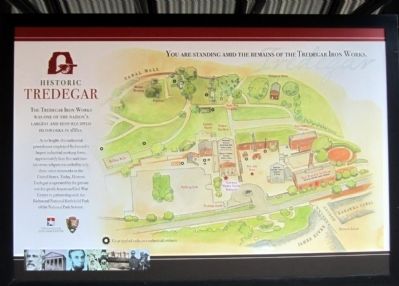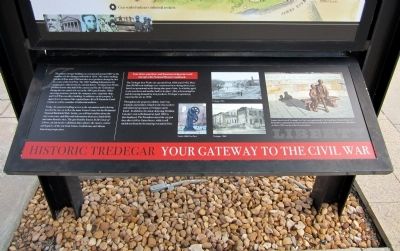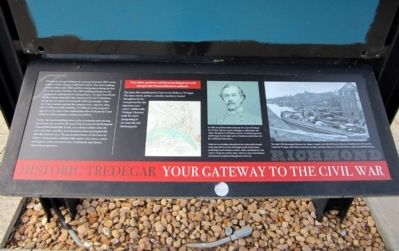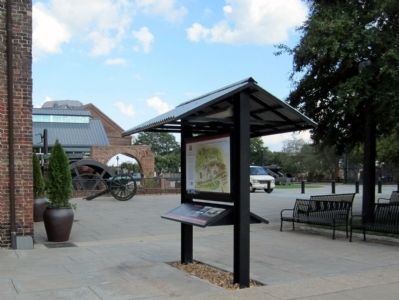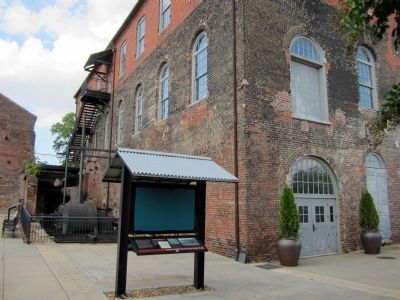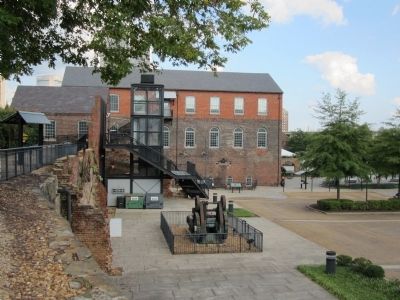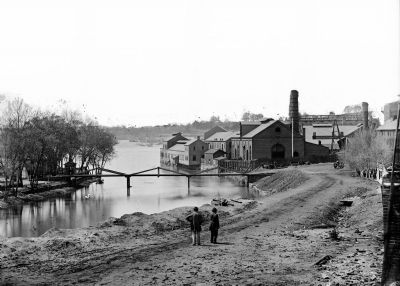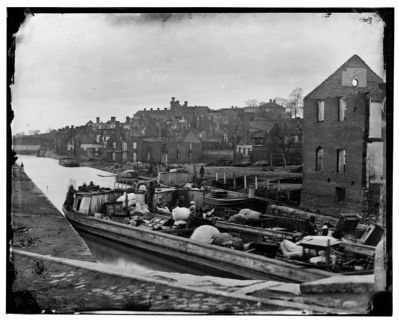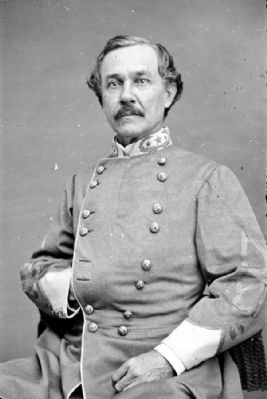Gambles Hill in Richmond, Virginia — The American South (Mid-Atlantic)
Historic Tredegar
The Tredegar Iron Works was one of the nationís largest and best-equipped ironworks in 1860.
At its height, this industrial powerhouse employed Richmondís largest industrial working force, approximately 800 free and slave laborers—a figure exceeded by only three other ironworks in the United States. Today, Historic Tredegar is operated by the private not-for-profit American Civil War Center in partnership with the Richmond National Battlefield Park of the National Park Service.
Historic Tredegar Your Gateway To The Civil War
The pattern storage building was constructed around 1867 on the remains of a fire-damaged mill built in 1854. The earlier building produced flour until 1860 and then wood products during the first two years of the Civil War. The 1867 building held patterns for casting guns, railroad wheels, and machinery. Tredegar Iron Works produced more than half of the cannon used by the Confederacy during the war, much of it cast in the 1861 gun foundry. Other surviving structures include the company store, carpentry shop, and Civil War-era office building. In addition, on the propertyís upper level, sections of the original James River & Kanawha Canal remain as well as a number of industrial artifacts.
Today, the pattern building serves as the orientation and ticketing area for the site, as well as the main Visitor Center for the Richmond National Battlefield Park. Inside, you will find exhibits about the cityís war years, and films and information about area battlefields and other historic sites. The gun foundry houses In the Cause of Liberty, an interactive exhibition that explores the causes, course and legacies of the war from Union, Confederate and African American perspectives.
Your ticket, purchases and donations help protect and interpret this National Historic Landmark.
The Tredegar Iron Works site operated from 1836 until 1952. More than 50 different buildings were constructed here during those years based on operational needs during that span of time. As a facility aged, it was torn down and another built in its place. After a devastating fire and decreasing demand for iron products, Tredegarís operations ceased at this site in 1952.
Throughout the property exhibits, water way remnants and artifacts related to the iron workers and industrial operation at Tredegar can be found. In addition, the statue depicting Abraham Lincolnís visit to Richmond in April 1865 is also displayed. The President toured the city just days after it fell to Union forces, while it still smoldered from the devastating evacuation fires.
(reverse)
The James River and Kanawha Canal
was the lifeline to Tredegar. The water wheels, turbines, and other machinery located throughout the site were powered by this important water source. Additionally, Tredegarís location made for easier transporting of raw materials and finished goods.
In 1848, Joseph Reid Anderson became the owner of Tredegar Iron Works. Anderson was an civil engineer, industrialist, and soldier. During the Civil War he served as a Confederate general, and Tredegar was the major source of munitions and ordnance for the Confederate States forces.
Anderson was a leading industrialist in the South and his foundry on the James River was one of the largest in the United States, producing steam locomotives, boilers, cables, naval hardware, and cannon. Using slave and free labor, Anderson supervised ordnance and munitions production through most of the war.
Erected 2011 by Richmond National Battlefield Park and the American Civil War Center.
Topics. This historical marker is listed in these topic lists: Industry & Commerce • War, US Civil. A significant historical month for this entry is April 1865.
Location. 37° 32.113′ N, 77° 26.756′ W. Marker is in Richmond, Virginia. It is in Gambles Hill. Marker can be reached from Tredegar Street, 0.1 miles west of South 5th Street, on the right when traveling west
. Touch for map. Marker is at or near this postal address: 470 Tredegar Street, Richmond VA 23219, United States of America. Touch for directions.
Other nearby markers. At least 8 other markers are within walking distance of this marker. Early Industrial Patterns (a few steps from this marker); Adapting Power (a few steps from this marker); Francis Turbine (a few steps from this marker); Overshot Waterwheel (within shouting distance of this marker); The Bulldozer Press (within shouting distance of this marker); Gateway to the Civil War (within shouting distance of this marker); Toledo 1000-ton Press (within shouting distance of this marker); Southern Firepower (within shouting distance of this marker). Touch for a list and map of all markers in Richmond.
More about this marker. On the right of the panel is a map of the Tredegar site showing the locations of historic buildings with the captions "You are standing amid the remains of the Tredegar Iron Works." and "Gear symbol indicates industrial artifacts."
On the base are photos of "Tredegar, 1865", "Tredegar, 1968" and a "Toledo 1000-Ton Press". A photo of the Lincoln statue carries the caption, "Sculptor David Frech of Newburgh, New York, was commissioned by The United States Historical Society of Richmond to commemorate the historic arrival of Abraham Lincoln and his son Tad and their tour of Richmond on April 4, 1865, ten days before his assassination."
On the reverse side is a map of the James River area and a photo of Joseph Reid Anderson.A period photo carries the caption, " This April 1865 photograph illustrates the changes wrought by the fall of Richmond. Burned-out buildings line the Kanawha Canal near Tredegar, while African Americans on barges–perhaps refugees or newly-freed slaves–gather household furnishings."
There is an identical marker on the east side of the Pattern Storage Building.
Also see . . .
1. Tredegar Iron Works. Civil War Richmond (Submitted on September 10, 2011.)
2. Tredegar Iron Works. National Register of Historic Places (Submitted on September 10, 2011.)
Credits. This page was last revised on February 1, 2023. It was originally submitted on September 10, 2011, by Bernard Fisher of Richmond, Virginia. This page has been viewed 983 times since then and 38 times this year. Photos: 1, 2, 3, 4, 5, 6. submitted on September 10, 2011, by Bernard Fisher of Richmond, Virginia. 7. submitted on November 5, 2009, by Bernard Fisher of Richmond, Virginia. 8. submitted on April 22, 2011, by Bernard Fisher of Richmond, Virginia. 9. submitted on November 5, 2009, by Bernard Fisher of Richmond, Virginia.
